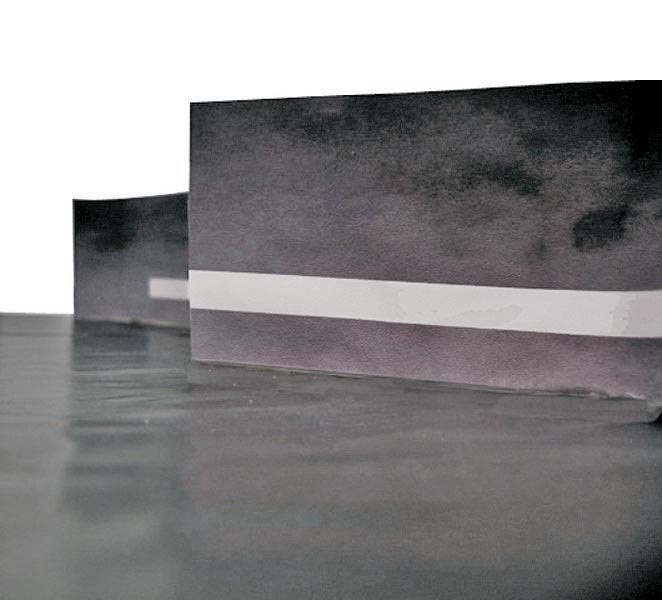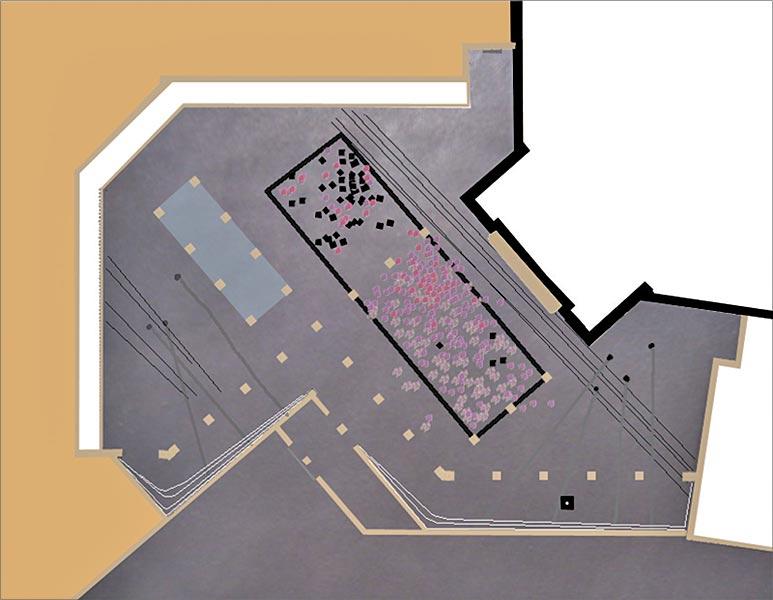FUNCTION
The Memorial Wall carries the names of the victims, the main organization element. The restored synagogue building embodies the sacred content and the museum represents a confrontation with reality. The names align on the wall to form an ever- widening column, which visually connecting the two separate walls, becoming a powerful, unifying image of the space.
CONTEXT
The space of remembrance is the central courtyard, and as the point of departure and arrival carries special significance in the development of the visitors’ emotional preparedness. The formal solution for the Memorial Wall, its compositional aim, is to provide a unifying gesture in the strongly vertically divided space.
CONCEPT
The choice of porcelain „pebbles” and frost resistant ceramic cladding creates a material and emotional contrast. The white names stand out from the dark grey surface, symbolizing the emergence of individuals from a faceless crowd. The delicacy of porcelain recalls the fragility of human life; its nobilty expresses its value. The organic forms of the porcelain „pebbles” expresses the wretchedness of the victims. One „pebble” stands alone as a harmonious form, but many pressed together becomes a dramatic surface.
Process
The brightly polished tiny porcelain „pebbles” and the graphite-grey, satin glazed, frost- resistant chamotte elements compose the wall’s surface. The variation in the ratio of the two materials to one another, with time, forms the Wall’s final image.
APPEARANCE
Materials: white glazed porcelain, dark gray chamotte clay
Sizes: porcelain ”pubbles”: 1x4x2 cm, chamotte cladding 16x16x2 cm
TEAM
Concept of landscape architect: Újirány Tájépítész Kft. / Árpád Kovács, Dominika Tihanyi
Cladding design: Edit Szabo

















